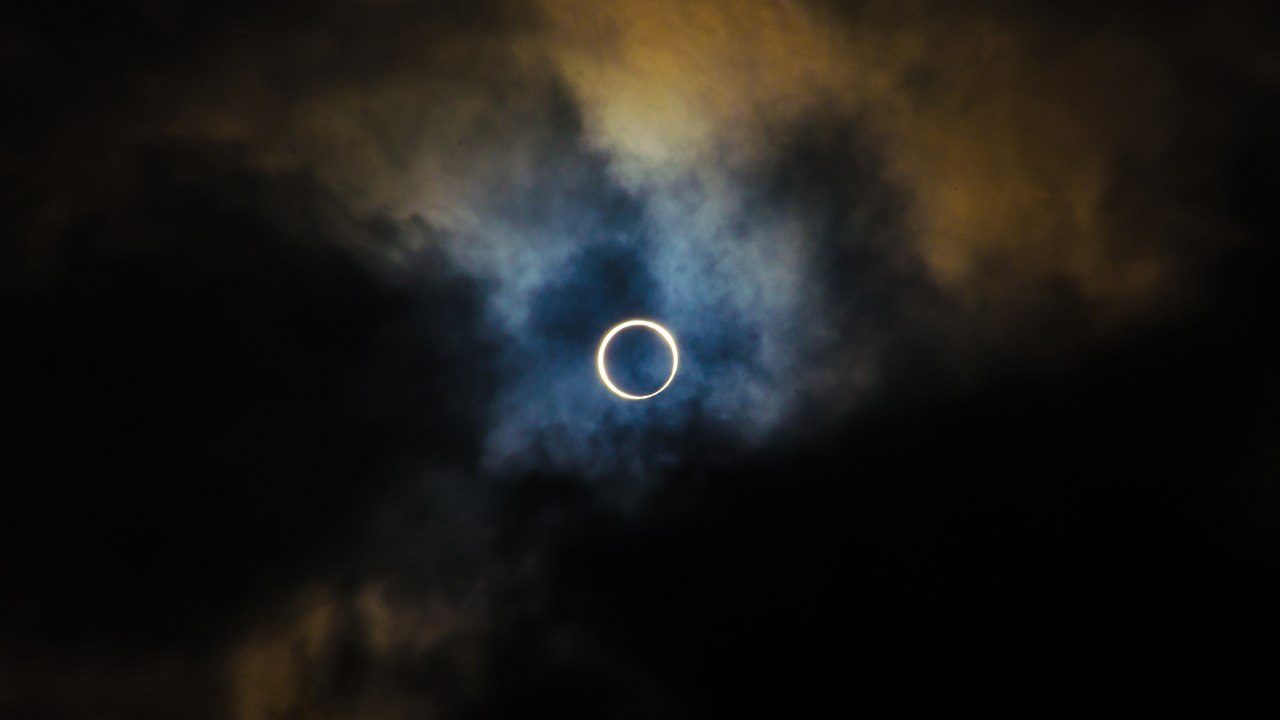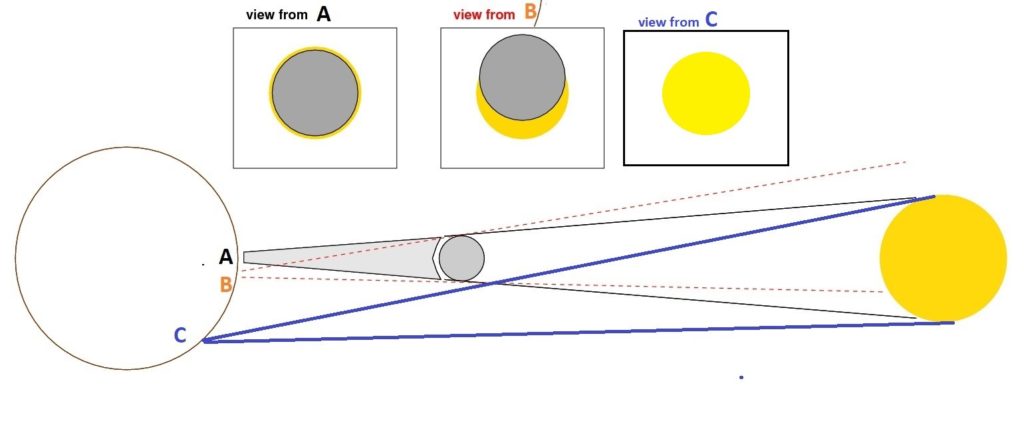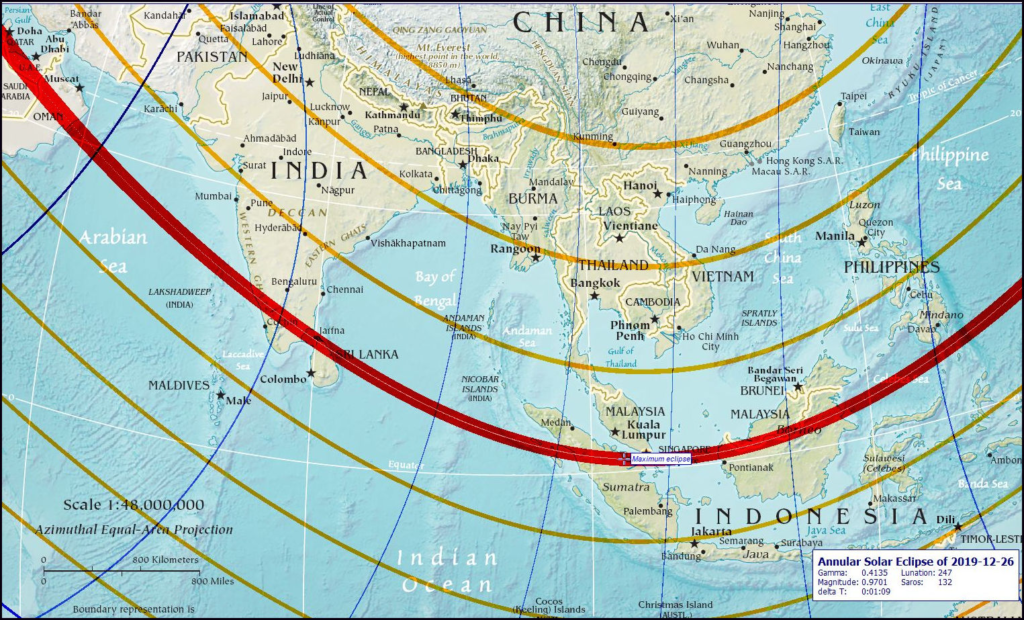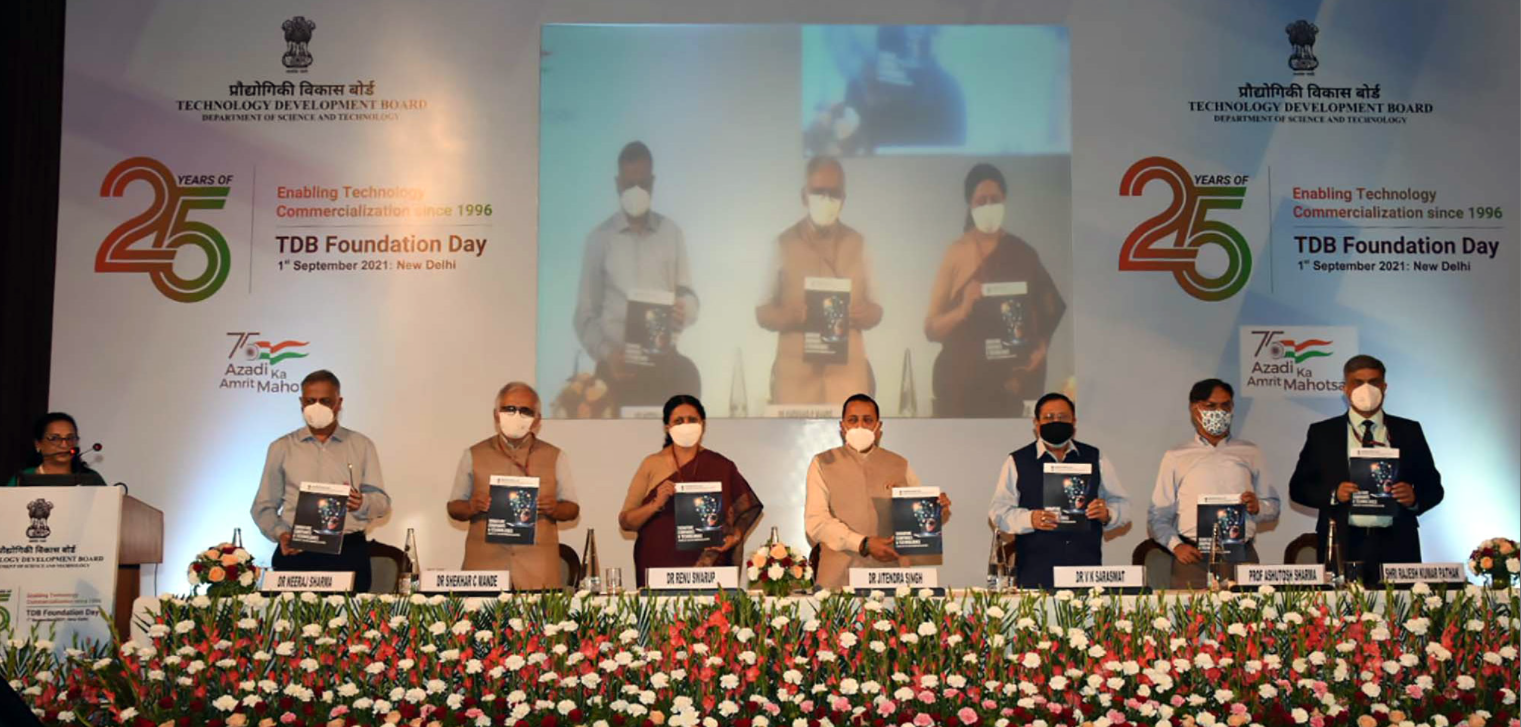
Here Is All You Wanted to Know About Annular Solar Eclipse of December 2019
- News
- 3.8K
The solar eclipse occurring on December 26 is not only the last one this year, but is also going to very special. During the eclipse, the Sun will appear as a ‘Ring of fire’ for a brief moment.
The spectacle will be visible in parts of South India. Those living along Mangalore or Madikeri in Karnataka; Telicherry, Calicut, Palghat in Kerala; Ooty, Coimbatore, Pollachi, Tiruppur, Palani, Dindugal, Karur, Erode, Trichy, Pudukottai, Karaikudi, Ammapattinam, Muttupettai in Tamilnadu; are in for a celestial treat. People in the rest of India need not despair, a partial eclipse will be visible everywhere in India.
The eclipse will commence at 8:00 am. The disc of the Moon will creep over the Sun from its western edge. The maximum eclipse will be around 9.30 am. The eclipse will conclude around 11:16 am. In between the Sun will appear in various sizes of crescents. For those along the line of annularity, about 9.30 am, the Sun will seem like a dazzling ring.
Shadow play
The Sun is about 400 times bigger than the Moon and also 400 times far away from Earth. This cosmic coincidence makes both the objects appear about the same angular size in the sky. At times, the Moon comes in between the Earth and the Sun and obstructs the view of the Sun partially. That is the partial solar eclipse. At times, all the three celestial objects – Sun, Moon, and Earth – may be so perfectly aligned that the Moon will obstruct the full face of the Sun for a brief moment. Then, we get a total solar eclipse. In the same way, the Moon may enter the shadow of the Earth, resulting in Lunar eclipse.

What is an annular eclipse
The annular solar eclipse is a kind of total solar eclipse. Sun, Moon, and Earth are aligned in a straight line. However, on that day, the apparent size of the Moon is smaller than the apparent size of the Sun. Only the central part of the Sun is obstructed. The circular edges of the Sun appear like a bright shining bangle.
The path of the Earth around the Sun and Moon around the Earth is elliptical. When the Earth goes around the elliptical path, at one point, usually around January 5, Earth will be closest to Sun and at another place farthest, generally around July 4. When an object is near, it appears bigger and when faraway appears smaller. When near, the Sun will look bigger and far, a bit smaller. Similarly, the Moon passes through the two extreme points, closest and farthest points, about once a month. It takes 27.55 days to complete one revolution from the nearest location to the same position. If a total solar eclipse occurs when the Sun is relatively closer and Moon far, the apparent size of the Sun will be bigger than the apparent size of the Moon. In that situation, the Moon will not be able to cover the full face of the Sun. While the central part is covered by the Moon, the edges of the Sun will stand out as a ‘Ring of fire’. This is called an annular eclipse.
On December 26, Sun is near to the closest point, and the apparent size will be about 1951 arc-seconds. The Moon, on the other hand, is not near its nearest location and hence its apparent magnitude will be about 1893 arc-seconds. Small Moon will not be able to obstruct the whole disc of the Sun.
Why can’t we see it everywhere?
Look at the picture below. The point marked A is right along the straight line connecting Moon and Sun. Therefore, the Moon will obstruct the central portion of the Sun at this point, and one can see the annular solar eclipse. In contrast at point B, the direction of the Moon is slightly away from that of the center of the Sun. Therefore, only part of the Sun will be obstructed. In point B, we have an only partial solar eclipse. However, at point C, the direction of the Moon does not come in the way of the Sun at all. Therefore, there is no eclipse at this point. Now, as the Earth revolves around its axis, the points A, B, C will trace a path on the surface of the Earth. These define the eclipse path.

Can I see the eclipse from my place?
The ring of fire will be visible along the path marked with red. The rest of India, partial eclipse will be visible.

How to look at eclipse safely
Any bright object is a threat to our eyes. Staring at bright light might cause harm from temporary discomfort to permanent retinal damage. Hence the advice not to look at a flash of lightning or welding with unprotected eyes. On any day, eclipse or otherwise, do not stare at the Sun. There are two ways to observe the Sun safely. One can use a solar filter (not goggles) specifically made for watching the eclipse. Or one can project the image of the Sun using a telescope or pinhole camera (do not look at the Sun directly with a telescope or pinhole camera). Using exposed x-ray films or smoked glass is not safe enough.
Does Sun emit any ‘harmful rays’ during the eclipse?
Eclipse is an apparent phenomenon. Just like an umbrella or tree obstructs the Sun and provides shade, in case of an eclipse, Moon obstructs, and its shadow falls on the Earth. Therefore, it is not an event occurring in the Sun or a phenomenon that affects it. Hence no mysterious rays emanate from Sun during an eclipse. Fearing a shadow is not human.
Then, what about Rahu and Ketu
The mythology of Rahu and Ketu is deeply ingrained in the cultural psyche in India. However, ancient Indian astronomers like Aryabhata and Lallacharya have stoutly rejected them. In fact, as far as Indian astronomy is concerned, Aryabhata was the first to present a cogent naturalistic and scientific explanation to eclipses. In his work Aryabhattiyam, written about 1500 years ago, he said, the shadow of Moon falling on a location results in a solar eclipse and when the Moon enters the Earth’s shadow lunar eclipses occur. Lallacharya’s work Sishyadhivruddhida tantra, a handbook for students of astronomy, written 1300 years ago, unambiguously rejects Rahu-Ketu myths and Puranic claims. The scientific heritage of Indian culture is rooted in the rational and logical works of Aryabhatta and Lallacharya and not baseless myths.
Eating and going out during the eclipse
Unlike the fake claims being circulated in social media, various studies have shown that cooked food does not get spoiled, nor going out and watching the eclipse is harmful. It is a natural celestial show. [Cover Image: Photo by Thammarith/Wikimedia Commons]
If you liked this article, then please subscribe to our YouTube Channel for the latest Science & Tech news. You can also find us on Twitter & Facebook.


